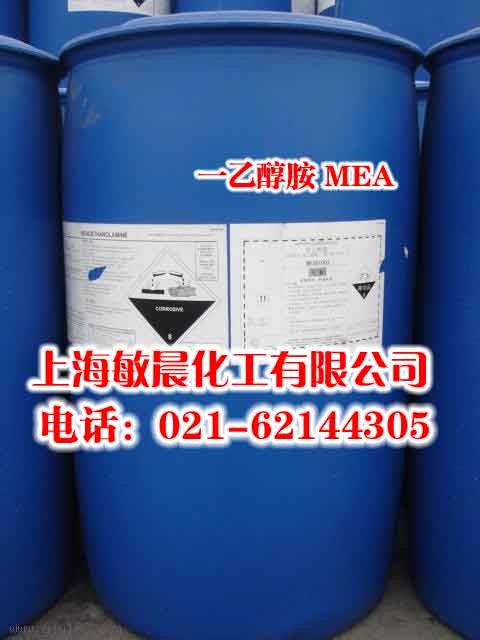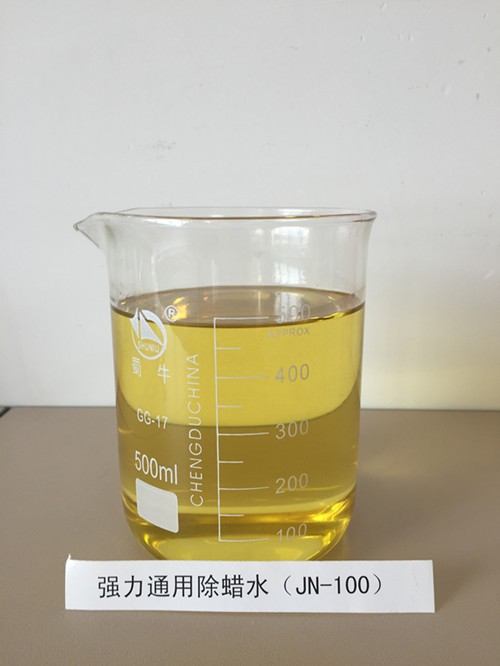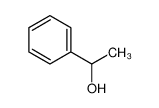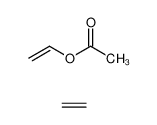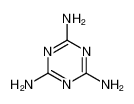| Product name | ethanolamine |
|---|
| Product number | - |
|---|---|
| Other names | Ethanolamine |
| Identified uses | For industry use only. Specialized Industrial Chemicals |
|---|---|
| Uses advised against | no data available |
| Company | MOLBASE (Shanghai) Biotechnology Co., Ltd. |
|---|---|
| Address | Floor 4 & 5, Building 12, No. 1001 North Qinzhou Road, Xuhui District, Shanghai, China |
| Telephone | +86(21)64956998 |
| Fax | +86(21)54365166 |
| Emergency phone number | +86-400-6021-666 |
|---|---|
| Service hours | Monday to Friday, 9am-5pm (Standard time zone: UTC/GMT +8 hours). |
Acute toxicity - Oral, Category 4
Acute toxicity - Dermal, Category 4
Skin corrosion, Category 1B
Acute toxicity - Inhalation, Category 4
2.2 GHS label elements, including precautionary statements| Pictogram(s) | 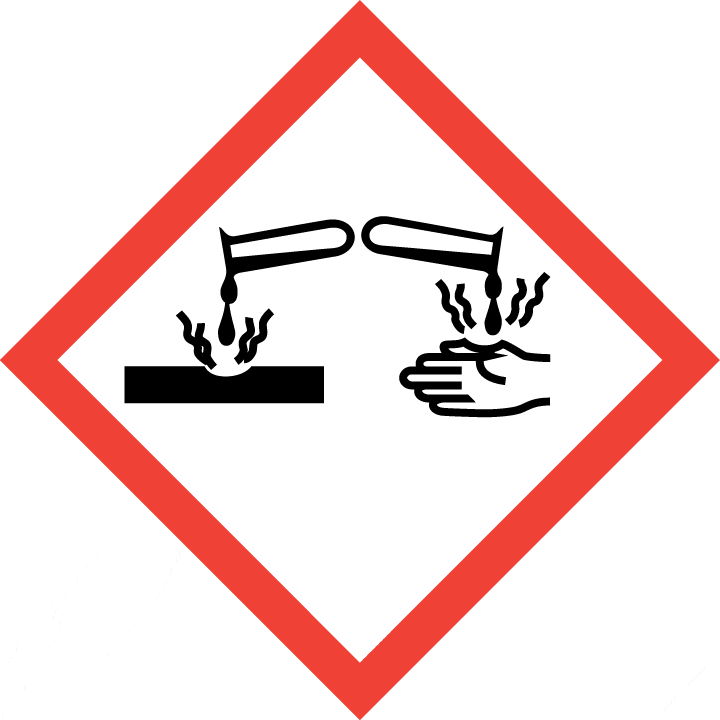 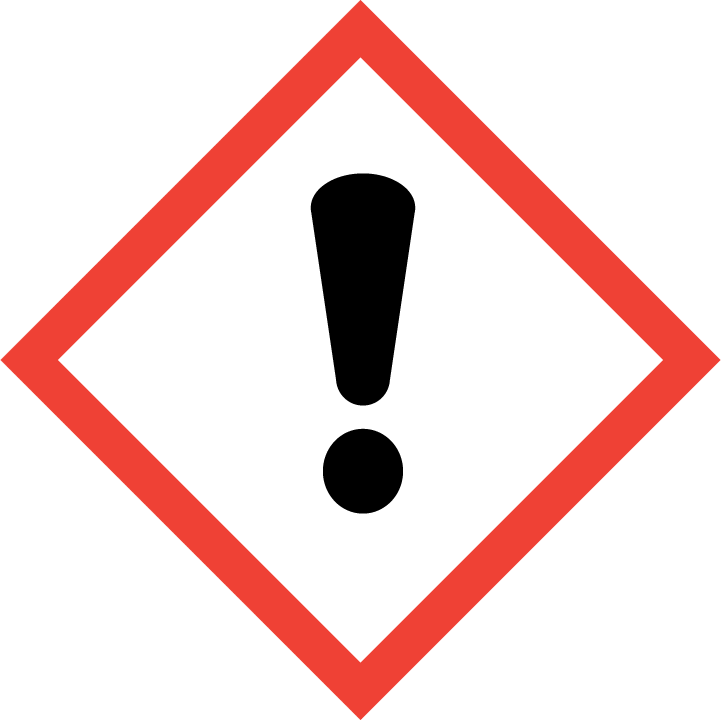 |
|---|---|
| Signal word | Danger |
| Hazard statement(s) | H302 Harmful if swallowed H312 Harmful in contact with skin H314 Causes severe skin burns and eye damage H332 Harmful if inhaled |
| Precautionary statement(s) | |
| Prevention | P264 Wash ... thoroughly after handling. P270 Do not eat, drink or smoke when using this product. P280 Wear protective gloves/protective clothing/eye protection/face protection. P260 Do not breathe dust/fume/gas/mist/vapours/spray. P261 Avoid breathing dust/fume/gas/mist/vapours/spray. P271 Use only outdoors or in a well-ventilated area. |
| Response | P301+P312 IF SWALLOWED: Call a POISON CENTER/doctor/…if you feel unwell. P330 Rinse mouth. P302+P352 IF ON SKIN: Wash with plenty of water/... P312 Call a POISON CENTER/doctor/…if you feel unwell. P321 Specific treatment (see ... on this label). P362+P364 Take off contaminated clothing and wash it before reuse. P301+P330+P331 IF SWALLOWED: Rinse mouth. Do NOT induce vomiting. P303+P361+P353 IF ON SKIN (or hair): Take off immediately all contaminated clothing. Rinse skin with water [or shower]. P363 Wash contaminated clothing before reuse. P304+P340 IF INHALED: Remove person to fresh air and keep comfortable for breathing. P310 Immediately call a POISON CENTER/doctor/… P305+P351+P338 IF IN EYES: Rinse cautiously with water for several minutes. Remove contact lenses, if present and easy to do. Continue rinsing. |
| Storage | P405 Store locked up. |
| Disposal | P501 Dispose of contents/container to ... |
none
3.Composition/information on ingredients 3.1 Substances| Chemical name | Common names and synonyms | CAS number | EC number | Concentration |
|---|---|---|---|---|
| ethanolamine | ethanolamine | 141-43-5 | none | 100% |
Consult a physician. Show this safety data sheet to the doctor in attendance.
If inhaledFresh air, rest. Refer for medical attention.
In case of skin contactRemove contaminated clothes. Rinse skin with plenty of water or shower. Refer for medical attention .
In case of eye contactFirst rinse with plenty of water for several minutes (remove contact lenses if easily possible), then refer for medical attention.
If swallowedRinse mouth. Give one or two glasses of water to drink. Do NOT induce vomiting. Refer for medical attention .
4.2 Most important symptoms/effects, acute and delayedVapor irritates eyes and nose. Liquid causes local injury to mouth, throat, digestive tract, skin, and eyes. (USCG, 1999)
4.3 Indication of immediate medical attention and special treatment needed, if necessaryImmediate first aid: Ensure that adequate decontamination has been carried out. If patient is not breathing, start artificial respiration, preferably with a demand-valve resuscitator, bag-valve-mask device, or pocket mask, as trained. Perform CPR as necessary. Immediately flush contaminated eyes with gently flowing water. Do not induce vomiting. If vomiting occurs, lean patient forward or place on left side (head-down position, if possible) to maintain an open airway and prevent aspiration. Keep patient quiet and maintain normal body temperature. Obtain medical attention. /Organic bases/Amines and related compounds/
5.Fire-fighting measures 5.1 Extinguishing media Suitable extinguishing mediaSuitable extinguishing media: Use water spray, alcohol-resistant foam, dry chemical or carbon dioxide.
5.2 Specific hazards arising from the chemicalSpecial Hazards of Combustion Products: Irritating vapors generated when heated. (USCG, 1999)
5.3 Special protective actions for fire-fightersWear self-contained breathing apparatus for firefighting if necessary.
6.Accidental release measures 6.1 Personal precautions, protective equipment and emergency proceduresUse personal protective equipment. Avoid dust formation. Avoid breathing vapours, mist or gas. Ensure adequate ventilation. Evacuate personnel to safe areas. Avoid breathing dust. For personal protection see section 8.
6.2 Environmental precautionsPersonal protection: filter respirator for organic gases and vapours adapted to the airborne concentration of the substance. Collect leaking and spilled liquid in sealable containers as far as possible. Cautiously neutralize spilled liquid. Then wash away with plenty of water.
6.3 Methods and materials for containment and cleaning upAccidental release measures. Personal precautions, protective equipment and emergency procedures: Use personal protective equipment. Avoid breathing vapors, mist or gas. Ensure adequate ventilation. Remove all sources of ignition. Evacuate personnel to safe areas. Beware of vapors accumulating to form explosive concentrations. Vapors can accumulate in low areas.; Environmental precautions: Prevent further leakage or spillage if safe to do so. Do not let product enter drains. Discharge into the environment must be avoided.; Methods and materials for containment and cleaning up: Contain spillage, and then collect with an electrically protected vacuum cleaner or by wet-brushing and place in container for disposal according to local regulations ... Keep in suitable, closed containers for disposal.
7.Handling and storage 7.1 Precautions for safe handlingAvoid contact with skin and eyes. Avoid formation of dust and aerosols. Avoid exposure - obtain special instructions before use.Provide appropriate exhaust ventilation at places where dust is formed. For precautions see section 2.2.
7.2 Conditions for safe storage, including any incompatibilitiesSeparated from strong oxidants, strong acids, aluminium and food and feedstuffs. Dry. Ventilation along the floor.Keep container tightly closed in a dry and well-ventilated place. Containers which are opened must be carefully resealed and kept upright to prevent leakage. Hygroscopic. Handle and store under inert gas.
8.Exposure controls/personal protection 8.1 Control parameters Occupational Exposure limit valuesRecommended Exposure Limit: 10 Hr Time-Weighted Avg: 3 ppm (8 mg/cu m).
Recommended Exposure Limit: 15 Min Short-Term Exposure Limit: 6 ppm (15 mg/cu m).
Biological limit valuesno data available
8.2 Appropriate engineering controlsHandle in accordance with good industrial hygiene and safety practice. Wash hands before breaks and at the end of workday.
8.3 Individual protection measures, such as personal protective equipment (PPE) Eye/face protectionSafety glasses with side-shields conforming to EN166. Use equipment for eye protection tested and approved under appropriate government standards such as NIOSH (US) or EN 166(EU).
Skin protectionWear impervious clothing. The type of protective equipment must be selected according to the concentration and amount of the dangerous substance at the specific workplace. Handle with gloves. Gloves must be inspected prior to use. Use proper glove removal technique(without touching glove's outer surface) to avoid skin contact with this product. Dispose of contaminated gloves after use in accordance with applicable laws and good laboratory practices. Wash and dry hands. The selected protective gloves have to satisfy the specifications of EU Directive 89/686/EEC and the standard EN 374 derived from it.
Respiratory protectionWear dust mask when handling large quantities.
Thermal hazardsno data available
9.Physical and chemical properties| Physical state | clear liquid |
|---|---|
| Colour | Colorless, viscous liquid or solid (below 51 deg F) |
| Odour | Unpleasant, ammonia-like |
| Melting point/ freezing point | 140°C(lit.) |
| Boiling point or initial boiling point and boiling range | 170°C(lit.) |
| Flammability | Class IIIA Combustible Liquid: Fl.P. at or above 60°C and below 93.33°C.Combustible. Gives off irritating or toxic fumes (or gases) in a fire. |
| Lower and upper explosion limit / flammability limit | Lower flammable limit: 3.0% by volume; Upper flammable limit: 23.5% by volume at 140°C |
| Flash point | 91°C |
| Auto-ignition temperature | 780°C |
| Decomposition temperature | no data available |
| pH | 25% aqueous solution: 12.1; 0.1 N aqueous solution: 12.05 |
| Kinematic viscosity | 18.95 cP at 25°C; 5.03 cP at 60°C |
| Solubility | In water:miscible |
| Partition coefficient n-octanol/water (log value) | no data available |
| Vapour pressure | 0.2 mm Hg ( 20 °C) |
| Density and/or relative density | 1.012g/mLat 25°C(lit.) |
| Relative vapour density | 2.1 (vs air) |
| Particle characteristics | no data available |
no data available
10.2 Chemical stabilityChemical stability: Absorbs carbon dioxide (CO2) from air. Stable under recommended storage conditions.
10.3 Possibility of hazardous reactionsCombustible liquid.ETHANOLAMINE is a base. Reacts with organic acids (acetic acid, acrylic acid), inorganic acids (hydrochloric acid, hydrofluoric acid, nitric acid, sulfuric acid, chlorosulfonic acid), acetic anhydride, acrolein, acrylonitrile, cellulose, epichlorohydrin, mesityl oxide, beta-propiolactone, vinyl acetate. Emits toxic fumes of nitrogen oxides when heated to decomposition [Sax, 9th ed., 1996, p. 1498].
10.4 Conditions to avoidno data available
10.5 Incompatible materialsIncompatible materials: Strong acids and oxidizing agents, iron, copper, brass, rubber.
10.6 Hazardous decomposition productsWhen heated to decomposition it emits toxic fumes of /nitrogen oxides/.
11.Toxicological information Acute toxicity- Oral: LD50 Guinea pig oral 620 mg/kg body weight
- Inhalation: no data available
- Dermal: no data available
no data available
Serious eye damage/irritationno data available
Respiratory or skin sensitizationno data available
Germ cell mutagenicityno data available
Carcinogenicityno data available
Reproductive toxicityno data available
STOT-single exposureno data available
STOT-repeated exposureno data available
Aspiration hazardno data available
12.Ecological information 12.1 Toxicity- Toxicity to fish: LC50; Species: Lepomis macrochirus (Bluegill); Concentration: >375 mg/L for 24 hr /Conditions of bioassay not specified in source examined
- Toxicity to daphnia and other aquatic invertebrates: LC50; Species: Daphnia magna (Water flea); Conditions: static; Concentration: 140 mg/L for 24 hr
- Toxicity to algae: no data available
- Toxicity to microorganisms: no data available
AEROBIC: 2-Aminoethanol, present at 100 mg/L, reached 49.2% (nitrogen dioxide end product)and 93.6% (ammonia end product) of its theoretical BOD in 2 weeks using an activated sludge inoculum at 30 ppm in the Japanese MITI test(1). 2-Aminoethanol achieved 91.8% biodegradation after 28 days in a OECD Guideline 301B Sturm Test and 93.4% after 22 days in a Sealed vessel test(2). 2-Aminoethanol, present at 10 ppm, reached 34% of its theoretical BOD in 5 days and 40% of its theoretical BOD in 20 days using a sewage inoculum(3). Other screening studies using a sewage inoculum gave similar results: 2.5 ppm test concentration, 5 day, 61-84% theoretical BOD(4); test concentration not specified, 10 day, 65% theoretical BOD(5); test concentration not specified, 5 day, 71% theoretical BOD, and 98% COD removal(6); 2.5 ppm test concentration, 5, 10, 20 and 50 days - 0, 58.4, 64, 75% theoretical BOD, respectively(7). In a Modified OECD Screening test, 2-aminoethanol, present at 20 mg/L, achieved 94% after 28 days using fresh inoculum and 99% after 28 days using preconditioned inoculum. In the Modified Sturm tests, 2-aminoethanol reached 97% DOC and 92% of its theoretical CO2 in 28 days using fresh inoculum; the compound also reached 96% DOC and 62% of its theoretical CO2 after 28 days using preconditioned inoculum(8). Using an activated sludge inoculum and the Closed Bottle, CO2 Evolution, and MITI tests, 2-aminoethanol starting concentrations of 7.64, 25.4, 76.4, and 100 mg/L exhibited 64.4, 91.4, and 71.2% O2 consumption, respectively, after 28 days; all tests had a lag time of approximately 5 days(9). Using an activated sludge inoculum and the Manometric Respirometry test, 2-aminoethanol starting concentration of 76.4 mg/L exhibited 83.0% O2 consumption, after 28 days with a lag time of approximately 5 days(9).
12.3 Bioaccumulative potentialAn estimated BCF of 3.2 was calculated in fish for 2-aminoethanol(SRC), using a log Kow of -1.31(1) and a regression-derived equation(2). According to a classification scheme(3), this BCF suggests the potential for bioconcentration in aquatic organisms is low(SRC). [
12.4 Mobility in soilThe Koc of 2-aminoethanol is estimated as 0.59(SRC), using a log Kow of -1.31(1) and a regression-derived equation(2). According to a classification scheme(3), this estimated Koc value suggests that 2-aminoethanol is expected to have very high mobility in soil. Adsorption can be affected by the acidity of the soil(SRC). The pKa of 2-aminoethanol is 9.5(4), indicating that this compound will exist almost entirely in the cation form in the environment and cations generally adsorb more strongly to soils containing organic carbon and clay than their neutral counterparts(5).
12.5 Other adverse effectsno data available
13.Disposal considerations 13.1 Disposal methods ProductThe material can be disposed of by removal to a licensed chemical destruction plant or by controlled incineration with flue gas scrubbing. Do not contaminate water, foodstuffs, feed or seed by storage or disposal. Do not discharge to sewer systems.
Contaminated packagingContainers can be triply rinsed (or equivalent) and offered for recycling or reconditioning. Alternatively, the packaging can be punctured to make it unusable for other purposes and then be disposed of in a sanitary landfill. Controlled incineration with flue gas scrubbing is possible for combustible packaging materials.
14.Transport information 14.1 UN Number| ADR/RID: UN2491 | IMDG: UN2491 | IATA: UN2491 |
| ADR/RID: ETHANOLAMINE or ETHANOLAMINE SOLUTION |
| IMDG: ETHANOLAMINE or ETHANOLAMINE SOLUTION |
| IATA: ETHANOLAMINE or ETHANOLAMINE SOLUTION |
| ADR/RID: 8 | IMDG: 8 | IATA: 8 |
| ADR/RID: III | IMDG: III | IATA: III |
| ADR/RID: no | IMDG: no | IATA: no |
no data available
14.7 Transport in bulk according to Annex II of MARPOL 73/78 and the IBC Codeno data available
15.Regulatory information 15.1 Safety, health and environmental regulations specific for the product in question| Chemical name | Common names and synonyms | CAS number | EC number |
|---|---|---|---|
| ethanolamine | ethanolamine | 141-43-5 | none |
| European Inventory of Existing Commercial Chemical Substances (EINECS) | Listed. | ||
| EC Inventory | Listed. | ||
| United States Toxic Substances Control Act (TSCA) Inventory | Listed. | ||
| China Catalog of Hazardous chemicals 2015 | Listed. | ||
| New Zealand Inventory of Chemicals (NZIoC) | Listed. | ||
| Philippines Inventory of Chemicals and Chemical Substances (PICCS) | Listed. | ||
| Vietnam National Chemical Inventory | Listed. | ||
| Chinese Chemical Inventory of Existing Chemical Substances (China IECSC) | Listed. | ||
| Creation Date | Aug 10, 2017 |
|---|---|
| Revision Date | Aug 10, 2017 |
- CAS: Chemical Abstracts Service
- ADR: European Agreement concerning the International Carriage of Dangerous Goods by Road
- RID: Regulation concerning the International Carriage of Dangerous Goods by Rail
- IMDG: International Maritime Dangerous Goods
- IATA: International Air Transportation Association
- TWA: Time Weighted Average
- STEL: Short term exposure limit
- LC50: Lethal Concentration 50%
- LD50: Lethal Dose 50%
- EC50: Effective Concentration 50%
- IPCS - The International Chemical Safety Cards (ICSC), website: http://www.ilo.org/dyn/icsc/showcard.home
- HSDB - Hazardous Substances Data Bank, website: https://toxnet.nlm.nih.gov/newtoxnet/hsdb.htm
- IARC - International Agency for Research on Cancer, website: http://www.iarc.fr/
- eChemPortal - The Global Portal to Information on Chemical Substances by OECD, website: http://www.echemportal.org/echemportal/index?pageID=0&request_locale=en
- CAMEO Chemicals, website: http://cameochemicals.noaa.gov/search/simple
- ChemIDplus, website: http://chem.sis.nlm.nih.gov/chemidplus/chemidlite.jsp
- ERG - Emergency Response Guidebook by U.S. Department of Transportation, website: http://www.phmsa.dot.gov/hazmat/library/erg
- Germany GESTIS-database on hazard substance, website: http://www.dguv.de/ifa/gestis/gestis-stoffdatenbank/index-2.jsp
- ECHA - European Chemicals Agency, website: https://echa.europa.eu/






